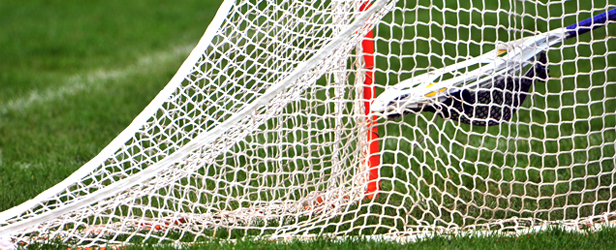
Photo courtesy of © Jaboardm | Dreamstime Stock Photos & Stock Free Images
Lacrosse is the oldest sport in America, yet it is just now up-and-coming in popularity. It’s a sport that takes guts and glory to play. And a sport that combines the demands of football and hockey, along with the endurance of soccer, is a sport that must have effective training. With such unique demands, there are certain exercises that are going to see more crossover from the weight room to the field.
Here are 10 exercises for lacrosse athletes:
Wide Stance SSB Box Squat
Since most lacrosse athletes are considered overhead athletes due to their shooting mechanics, I do not do traditional barbell squats with them. In the barbell squat position, the athlete's shoulder is fixed in an externally rotated position—a position we want to avoid for overhead athletes. That being said, we need, of course, for them to get the strength benefits of a squat. That leaves a spot to introduce the safety squat bar.
Snatch Grip RDLs
By using the snatch grip, you force much more recruitment from the lats while also requiring more movement from the hips and hamstrings. We also encourage our athletes to use an alternating grip to get that direct crossover to holding a lacrosse stick.
Band Resisted Landmine Shoulder Press
Lacrosse athletes do spend quite a bit of time overhead, so we need to keep that in mind with program design. As such, I program a ton of neutral grip pressing to keep the humerus in a comfortable spot within the socket. One of the great exercises for this is the Band Resisted Landmine Press. Not only does this allow for neutral grip pressing, but it also lights up the core while the band adds an extra challenge.
Cross-Behind Medicine Ball Push
All athletes will benefit from medicine ball exercises. When done right, they have great carryover in terms of power. Building up rotational power is essential for a lacrosse athlete as this is what makes up a good chunk of his shot. A great exercise for this is the Cross-Behind Push. Not only do you get the upper body push and the rotational power, but you also add in the crossover step that increases the level of difficulty.
Goblet Star Lunge
Like most sports, lacrosse is a multi-directional sport. Therefore, doesn’t it make sense that, when training for it, the training should reflect the continuous need to switch/change directions? A great exercise to hammer all planes is the goblet star lunge. Holding a dumbbell in the goblet position forces core activation while hitting forward, lateral, and reverse lunges every rep.
Landmine Cross Body Lateral Raise
I am a huge fan of the landmine position for a lot of exercises. This is a pretty humbling exercise because it doesn’t require a ton of weight. While hitting the shoulder and upper back, you also get a crap-ton of anti-rotation since your body wants to rotate with the bar.
Alternating Grip Chin-Ups
We all know the benefits of chin-ups. However, especially in pre-season programming, I love using an alternate grip when doing these. Not only does it closely relate to a lacrosse player's stick grip, but it also creates a unique challenge on the grip, biceps, and upper back.
Band Resisted Kettlebell Swings
Kettlebell swings, when done right, can be a great posterior chain and hip developer. However, after the swing is mastered, try adding band resistance. This makes it more challenging on the posterior chain while also asking a lot from the anterior core.
Single-Arm Chest Press
How often in a sport are we required to only use one arm or one leg? It’s not a coincidence that I am a huge fan of single-arm and single-leg exercises. I think they have a huge carryover to bilateral exercises and to the athlete's sport. A single-arm chest press smokes the chest, requires immaculate shoulder stability, and keeps that core screaming.
Trap Bar Farmer’s Carry Finisher
Deadlifts are, and should be, a staple of most people's program. I am a huge fan of the trap bar, especially for beginners since the technique can be picked up quickly and the risk of injury for young athletes is a lot lower. We also like to use the trap bar as a great finisher. This exercise combines deadlifts with heavy carries, resulting in an absolutely brutal exercise from which more than just lacrosse athletes would benefit.
Lacrosse is a growing sport and requires more demands than most people think. Thus, the training program for a lacrosse athlete should reflect these demands. These exercises not only challenge a lacrosse athlete, but they also have a high carryover to his performance on the field.









